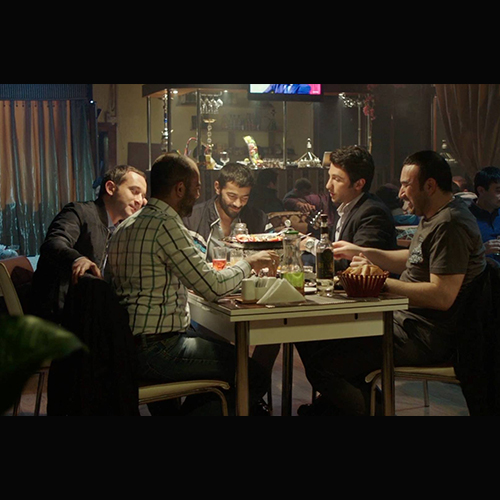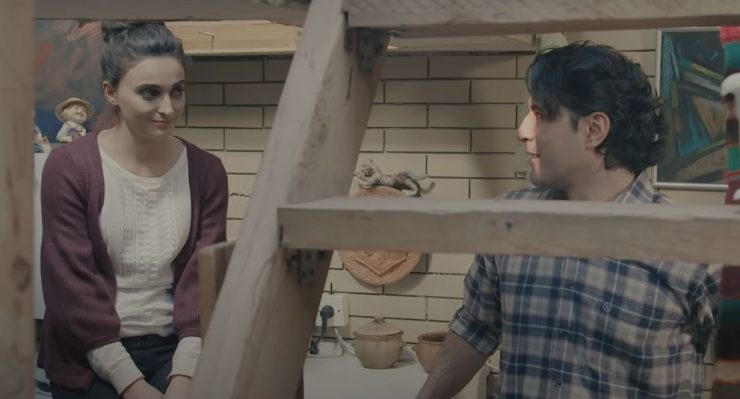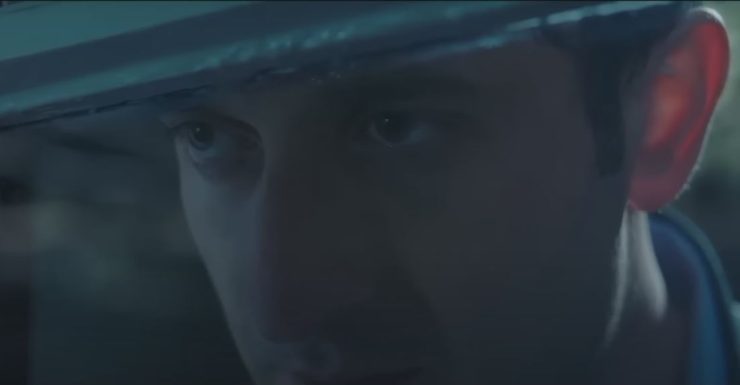Society in “Curtain”

Along with love stories and dramas, films have helped us form an idea about the lives of people we have never seen and countries we have never visited and have reflected the problems in society on the screen. Life is given to us only once and it is not enough to go everywhere and learn all the lessons. Movies also show us the current era and society in all its visible and invisible aspects. The “Curtain” trilogy, which we will talk about, is one of the films related to this topic. “Curtain”, the first film of the trilogy directed by Emil Guliyev in next subsequent years (2016, 2017, 2019), is also the director’s first full-length film. The “Curtain” tells the story of a girl named Lala, who could not bear her father’s forced marriage and ran away with her lover who is also her brother’s childhood friend Emin. It touches on topics such as women, society, and “family honor”. The main theme in “Second Curtain”, which is the second film of the trilogy, and according to the audience’s opinion, the best one, is betrayal. Tima is betrayed by his wife, and his friends, who are aware of this betrayal, do not tell him anything. Thus, the film deals with the topic of betrayal of family, friends, and spouse. In “The Last Curtain”, the conflict between material and spiritual values is brought to the fore. A person named Nariman wants to build a building where children playground situates and he somehow persuades whole neighborhood, except one, Farman who tries to prevent this.

Women in the Curtain
Lala’s mother succumbed to the pressure of society and accepted the life she was living. First, her place in society is important to her then his daughter`s happiness and family. Although Lala runs away with her boyfriend, withdefying her and family, she is only able to tell her brother’s friend Fuad on raping by Rauf. “I didn’t say that no one would believe me,” he consoles herself and dedicates herlife to her new husband. In the example of Lala’s story, honor, virginity, etc. in the society, the obligations imposed on women unfolds. In addition to all this, Zaur’s little daughter draws attention. Although the film is not about her, even though we only see her in justtwo scenes, we can sense that this future awaits her. The women in “Second Curtain” are Samira, Arif’s sister and mother. Although Samira tries to forget the care she didn’t get by her husband, whilebeing together with Arif, she still loves Tima, or she deceives herself in order not to be a divorced woman in society. Arif’s sister is married to Ibish. She blames Ibish for not being able to give hera good life, comparing him to his friends and partners. In fact, unlike her brother Arif, she takes heart fron Ibish who listens to her. A person who has been humiliated all her life and gets permission from her brother even when she wants to get a divorce effaces her inferiority feelings in this way. Arif’s mother relies on mullahs and witches to prevent her daughter’s divorce. We see her only once in the film – when Arif takes his sister home by force, saying hopelessly that “everything will be fine” and in the scene where she ignores the girl. In “The Last Curtain”, we are greeted by two female characters, one of themis Solmaz, and the other one is Nariman‘s wife, whose name we have only heard. The relationship between Solmaz and Ulvi is as much based on mutual use as it is based on reality. They can easily show their faces and selves to each other, which Solmaz does not show to his family, and Ulvi to people.
Fathers and sons
In the trilogy, the similarity between the father and his sons as well as the contradiction arising from this similarity is also depicted. Zaur and his unshown father whose name is mentioned, Ibish and his son, Farman and his son. Zaur obeyed his father and got married, but later regretted it. He grew up with a mother who obeyed his father’s orders.
In the film, he wants to make a voice and avoid submission, but in the finale, he succumbs to the pressure of society and is defeated by his anger. Although we see Ibish and his son once in “The Second Curtain”, unlike other fathers, he appears to us as a father who does not put the responsibility on the mother, or rather, replaces the mother who refuses to take responsibility. In “The Last Curtain”, Farman wants to remedy by humiliating him. In fact, he justdoes not know how to build a relationship with him, the image of a strong, non-crying, tough man created by society does not allow him to do so. Even though he is against the sale of the playground for his little son, he cannot show him love. Fathers treat their sons as their fathers treated them. This is also depicted in Jonny and his father. Although the Farman humiliates his son in the presence of Johnny, he requires him not to bow in front of others. As a result, children who cannot find a place in their family without their father, who cannot speak out, become individuals who cannot make their own decisions in the future.

The enemy within
In all 3 films, a thief, a traitor and an apostate are known to the characters. Rauf, who loves Lala in the first film of the trilogy, but fails to reciprocate his love and rapes her at the first opportunity, are disliked by Zaur and Fuad either. The only reason for Zaur’s relationship with Rauf is blood relation. Unlike his other friends, Rauf was not chosen by him, he was forced, just like his family and society. In “The Second Curtain”, Anar appears as someone who treats everyone harshly from the film first scenes and does not allow his sister to divorce for the sake of honor. Indeed, he is so cowardly as to have relationship with his friend’s wife and to want to shoot Samira with the rifle given by Tima. In “The Last Curtain”, even though Ulvi acts like someone who doesn’t care about money, he tries to kill Nariman for the 50,000 he gave him at the end. In all 3 films of the trilogy, the enemy is the one that seems to be the most caring person for the protagonist.
The non-existent hero
There is no positive hero in the trilogy. Society is presented as consisting of the oppressors, the oppressed, and the silent ones. Examples of these are Fuad, Ibish, and Johnny. In the first film, Zaur’s friend Fuad calls him when he finds out that Rauf is the one who molested Lala, but it is too late. The last time we see him in the movie while he cries in the car. In “The Second Curtain”, Ibish, unlike his other friends, tells the truth to Tima, but when he comes to ask for the rifle, he does nothing to stop him, silently giving the rifle. Protagonists can’t or don’t try to change anything. In “The Last Curtain”, Johnny walks away without saying anything to Nariman, who killed his father, nummamorous Ulvi and Anar. The film ends with the sunrise. The sunrise is a symbol of hope for the future. Although the trilogy shows the truths of society, this truth is presented as if it only consists of the oppressors and the oppressed. Women are humiliated and subordinated by men, while men are presented as cruel and angry. In every society, these people are shown as the prototype of Azerbaijani society. In all 3 films, the police and the doctor are mentioned, but the audience does not see them. Although this case is typical for the trilogy, situations like their absence in the incident of 2 people death and one injury, especially doctor and police persuasion on Anar`s sentence on ”I was shot from behind”, while it was done from front change it.

All three films of the trilogy are an attempt to show the “inner face” of society. What is the director’s purpose “mirroring” to society, showing its “behind the scenes”? In any case, the large number of views of all three films on online platforms suggests that the director has succeeded to a certain extent in his goal – to convey his message to society.
Sakinakhanim Valiyeva
